The eruption of the submarine Hunga Tonga-Hunga Ha’apai volcano on Saturday 15 January 2022 left thousands people without homes, supplies and internet. At the time of writing, there have been three confirmed deaths in Tonga related to the eruption, two of which were local people, and one British national.
Now, as scientists are racing to understand more about the eruption, planetary volcanologists are wondering whether Hunga Tonga-Hunga Ha’apai can teach us about the histories of our neighbours in the Solar System.
The volcano’s explosion sent shockwaves as far as Alaska and the UK, and caused a tsunami that affected the shores of Australia, the US and Russia. It has been reported that two people have died in Peru due to flooding caused by the tsunami. The static charge built up by the volcanic eruption is also said to have been responsible for nearly 400,000 lightning events in the hours following the explosion.
Read more about volcano eruptions:
- In pictures: The volcanic eruption devastating La Palma
- What would happen if all volcanoes on Earth erupted at once?
Around 10 hours after the eruption, people in Miami, USA, over 7,000 miles away from the volcano, saw pressure waves at speeds of 695 mph – acoustic ripples in the air which were essentially travelling at the speed of sound through the atmosphere.
Five days after the eruption, Dr Samuel Mitchell told BBC Science Focus magazine that the volcano's activity appeared to have stopped at the surface level, though volcanologists could not say what was happening under the water.
Why couldn’t scientists predict the Tonga eruption?
While some volcanic eruptions can be predicted, not all will show warning signs, says Mitchell.
“For example, at the recent La Palma eruption in the Canary Islands, we had a classic signal that something's going to happen. There was a scattering of earthquakes slowly moving up towards the surface to a particular spot.
“There also could be gas emissions, or increased temperatures of surface water, or the ground inflating slowly – these things can be detected by satellite.”
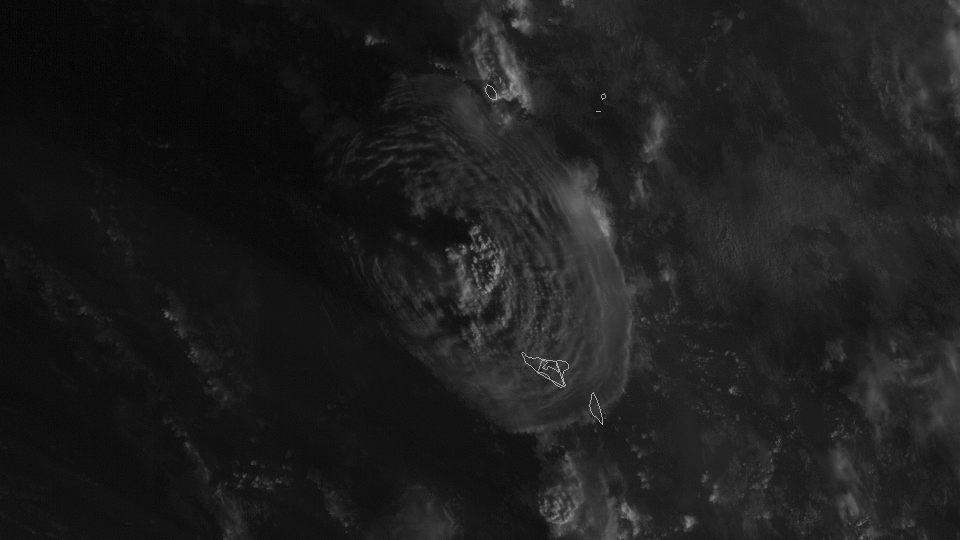
As a submarine volcano, Hunga Tonga-Hunga Ha’apai is less studied than land volcanoes. This made it difficult to predict how big the eruption would be when volcanologists noticed activity in the area two days before the event, said Mitchell, whose focus is on submarine volcanoes.
Most of the data that serve to warn scientists of an impending eruption are collected by instruments around the volcano, and Mitchell said gathering that data for submarine systems is very difficult.
The preceding activity also depends on the cause of the eruption. Scientists still don’t know why the Hunga Tonga-Hunga Ha’apai volcano erupted, but as it is a submarine volcano, it’s likely to have been an instantaneous reaction, not something that had been bubbling under the surface for some time.
“You have magma that is 1,000°C interacting with the cold seawater, as opposed to an eruption [on land] fuelled by magma trying to get to the surface,” said Mitchell.
There are two uninhabited islands on the edge of the volcanic crater: Hunga-Tonga and Hunga-Ha’apai. Following the eruption, satellite images indicate these islands are a lot smaller, meaning the explosion likely destroyed a large part of the land.
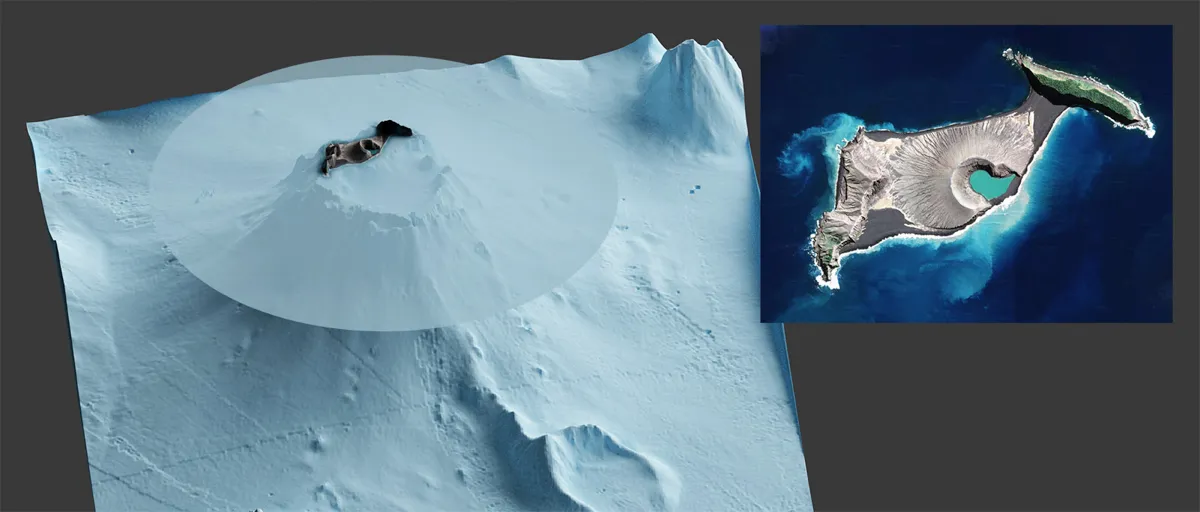
How will the eruption impact future research?
Submarine volcanoes can be found around the globe at a variety of depths. Because of their nature, Mitchell said scientists don’t yet know exactly how many there are.
“Our seafloor hasn't been mapped in sufficient detail to tell us exact numbers,” explained Mitchell. “But estimates currently think around 70 to 80 per cent of all volcanic activity actually happens on the seafloor.”
These submerged volcanoes are relatively under-studied, which meant that the Tongan disaster was unpredictable. Now, though, research from Hunga Tonga-Hunga Ha’apai will help volcanologists like Mitchell better understand and predict future events.
“There may now be an effort to study the consequences of the eruption, such as the effects on local marine life, and perhaps to monitor any post-eruptive changes or processes at the volcano itself,” suggested Ferguson. “For example, it may be that magma is still in motion beneath the volcano and that the detection of this movement can help us understand the pathways that magma takes on its way to surface.”
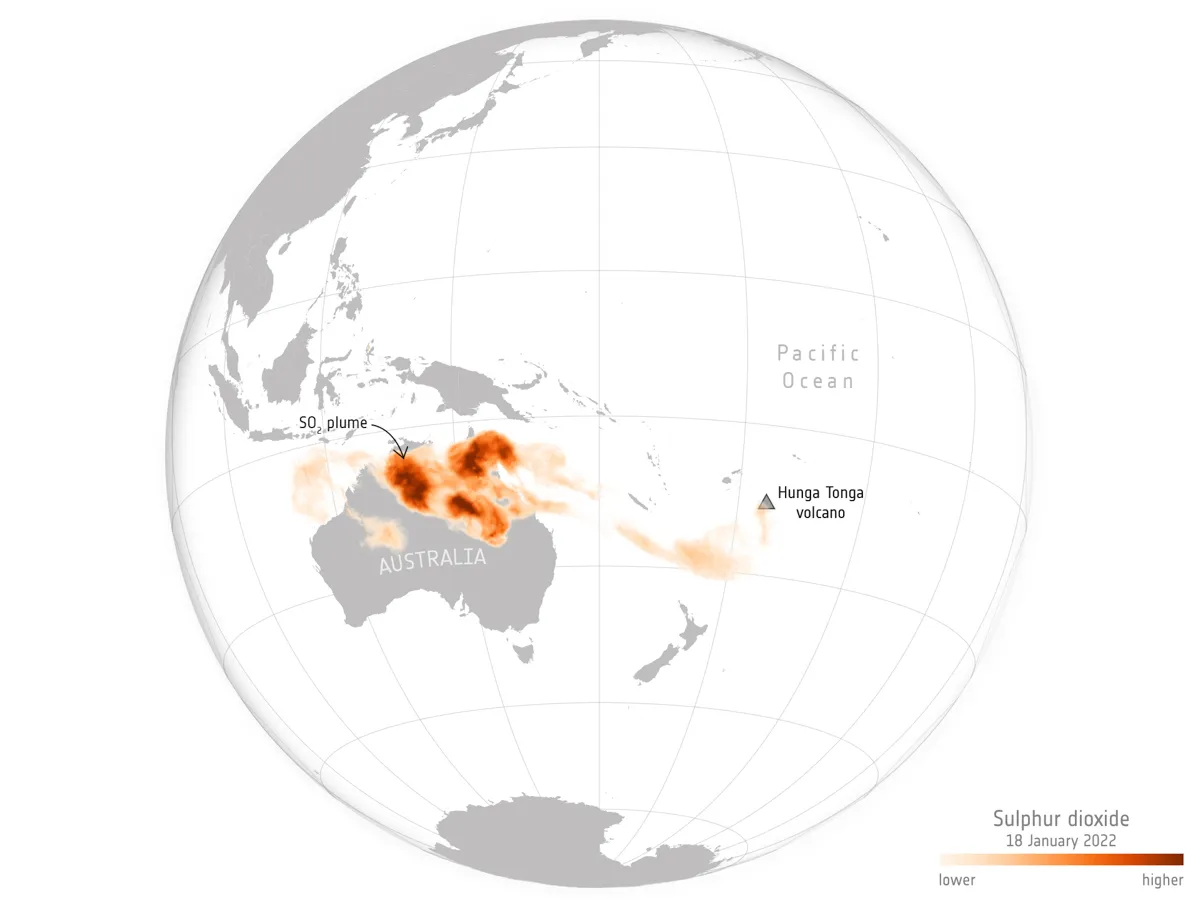
The eruption could even help further our understanding of volcanoes on other planets.
Previous eruptions by submarine volcanoes have resulted in the formation of islands, as the ridges of the volcano move and break the surface of the water. “These islands formed of pyroclastic material that have the same general morphology as features seen on Mars,” explained Dr Ashley Davies, a NASA geologist and planetary scientist specialising in volcanology.
“This suggests that the Martian features may have formed under similar circumstances – initially highly explosive events due to magma interacting directly with water.”
On Earth, these volcanic islands usually erode rapidly after formation. One formed in 1964 has halved in size,its surface area of roughly 2.7km2dropping to 1.3km2as of 2012.
“If the features on Mars indeed formed as a result of the same volcanic processes, the persistence of these ancient features suggests much less erosional forces are in play – a shallower sea, perhaps, with less wave action – allowing them to persist for billions of years,” said Davies.
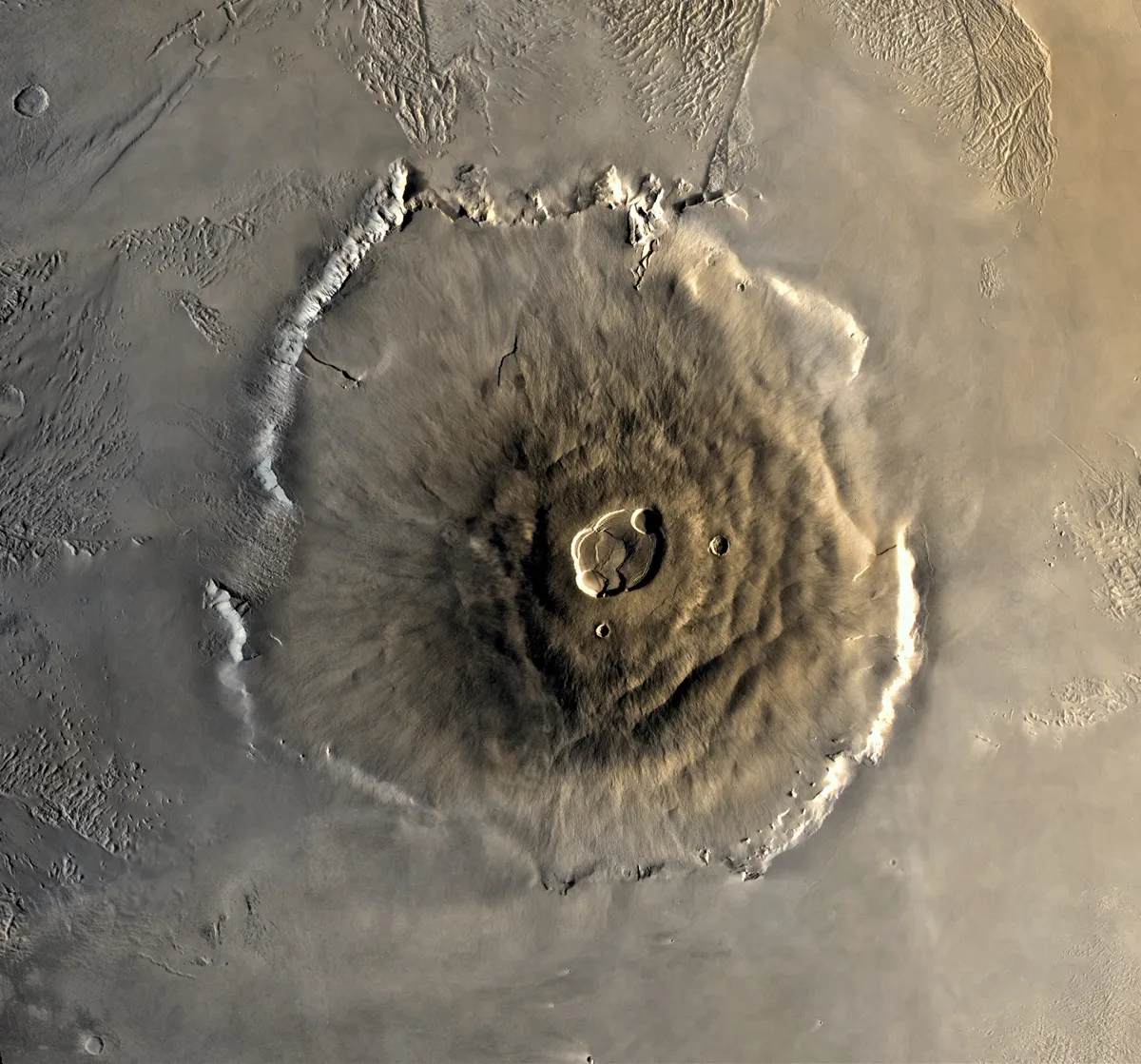
Scientists can’t say for sure if or when Mars’s volcanoes erupted, nor what these eruptions would’ve been like. However, we do know that in the distant past there was water on Mars.
“Mars had water on the surface in the past, and has ice just below the surface now, which gives potential for those kind of [lava and water] interactions,” said volcanologist Prof Lionel Wilson, from Lancaster University. Now, Mars’s thin atmosphere makes any water that comes to the surface just boil off. But around three billion years ago, atmospheric pressure could have been high enough to have standing water.
Some of the bigger volcanoes on Mars, like Olympus Mons and Ascraeus Mons, could be billions of years old, Wilson explained. So, if there was an overlap between denser atmosphere and volcanic activity, explosions like that of the Hunga Tonga-Hunga Ha’apai volcano could’ve occurred.
“Tonga is at quite a shallow depth below the surface of the water, which is what made it so explosive – deeper underwater, the high pressure tends to suppress violent interactions,” said Wilson.
While Mars’s volcanoes could have been active in a similarly low-pressure environment, the volcanoes on Venus would erupt more like a deeper submarine volcano here on Earth.
“There is indirect evidence that there’s volcanic activity on Venus. Some infrared signals look like examples of hot lava, but we can’t see details, just a hotspot,” said Wilson. “But, any gases dissolved in liquid lava on Venus would have a hard time getting out, so it’s not likely to be violent explosions. To get that classic fire fountain eruption, the gas needs the ability to produce bubbles that expand in the lava to tear it apart into little droplets.”
How did the Tonga volcano cause a tsunami?
Unfortunately, scientists say that instances of volcanic-induced tsunamis aren’t well recorded. And until more data comes through, it’ll be hard to say what exactly caused the Tonga tsunami, says Mitchell.
“There could be a few different factors, but the main thing needed to create the tsunami is a huge displacement of water.
“That could be from an explosion under the water that basically propels water out and away from the volcano. There is a case for that here, because we've seen the size of the physical explosion. The shockwave it generated could be a way to suddenly move water outwards.”
The tsunami could also have been caused by large amounts of land moving in the ocean. If the Hunga-Tonga-Hunga-Ha'apai volcanic crater has collapsed, it would have caused a huge movement of water below the surface.
As the tsunami spread, warnings were issued around the South Pacific and as far as Japan, Canada and the US. In Peru, where two people died due to flooding, the waves overturned an oil tanker. More than 6,000 barrels of oil spilled out onto Peruvian beaches, in what has been called an ‘ecological disaster’ that will affect marine life and local fisheries for years.
The extent of the eruption’s effect on marine biodiversity is not yet known, however Dr David Ferguson, a volcanologist at University of Leeds, says ash falling into the surrounding ocean will likely have the most significant impact.
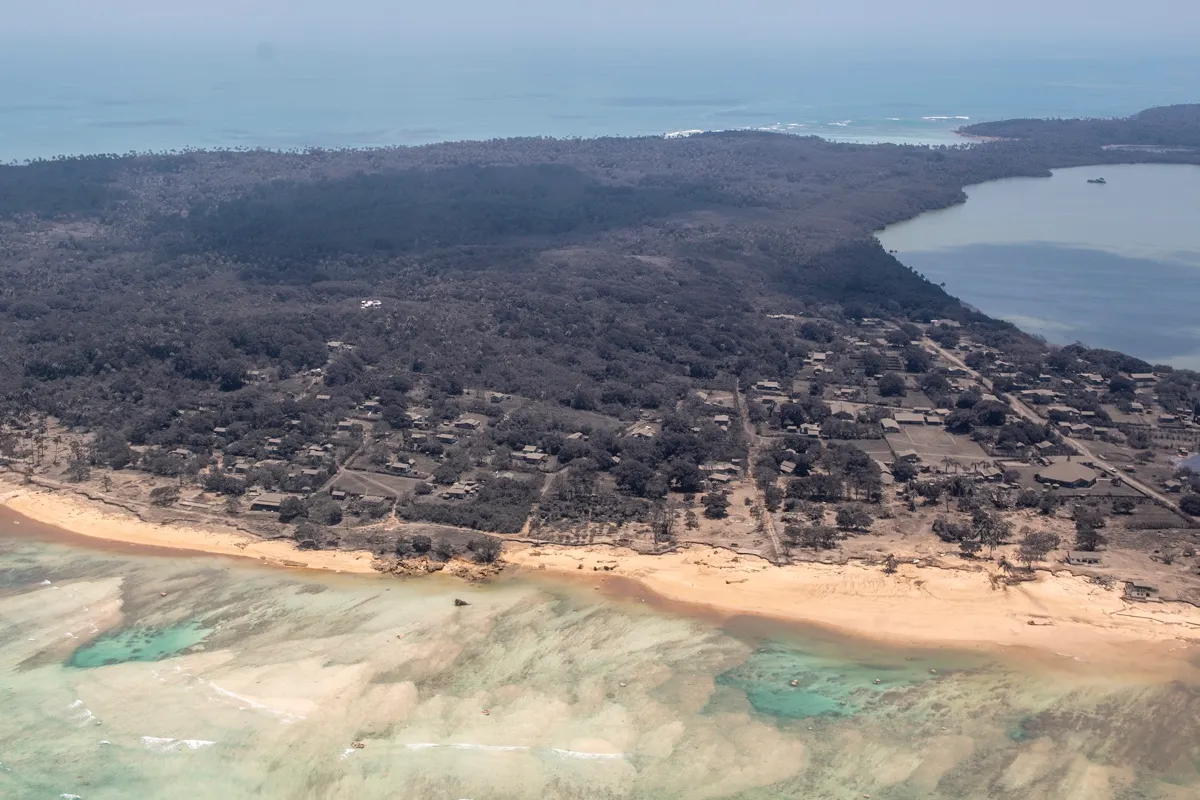
How does volcanic ash affect ecology?
“Ash erupted underwater doesn’t tend to travel very far, however, the fact that the volcanic plume was ejected into the atmosphere allows the ash within it to be transported further and then deposited into the ocean nearby,” said Ferguson.
“If the amount of ash [fallen into the water] is significant, it can smother features such as coral reefs, and cause fish and other marine animals to move elsewhere, disrupting food chains, ecology, and more.”
Interestingly, ash can provide nutrients that benefit some organisms, such as marine algae.
“Algal blooms have been detected in areas where volcanic ash has been deposited in the oceans,” said Ferguson. This is not necessarily good news, however, as it can perturb the ecology of coral reefs and lead to detrimental effects. For a country likeTonga, where fishing is a very significant part of the economy, there may be issues with temporary loss of fish stocks due to the ash fall.”
The spread of ash around Tonga affected flights and jeopardised efforts for foreign aid. Ash can also cause health problems, irritating the throat and causing people to cough, though these impacts are said to be short term and relatively harmless. For those with pre-existing respiratory problems, the falling ash could worsen symptoms like wheezing and shortness of breath.
Because the eruption happened under the sea, it’s likely that the resulting ash will have picked up salt from the water on its way to the surface. This salt then fell over land, and some early reports suggest that the salt may be desiccating local crops.
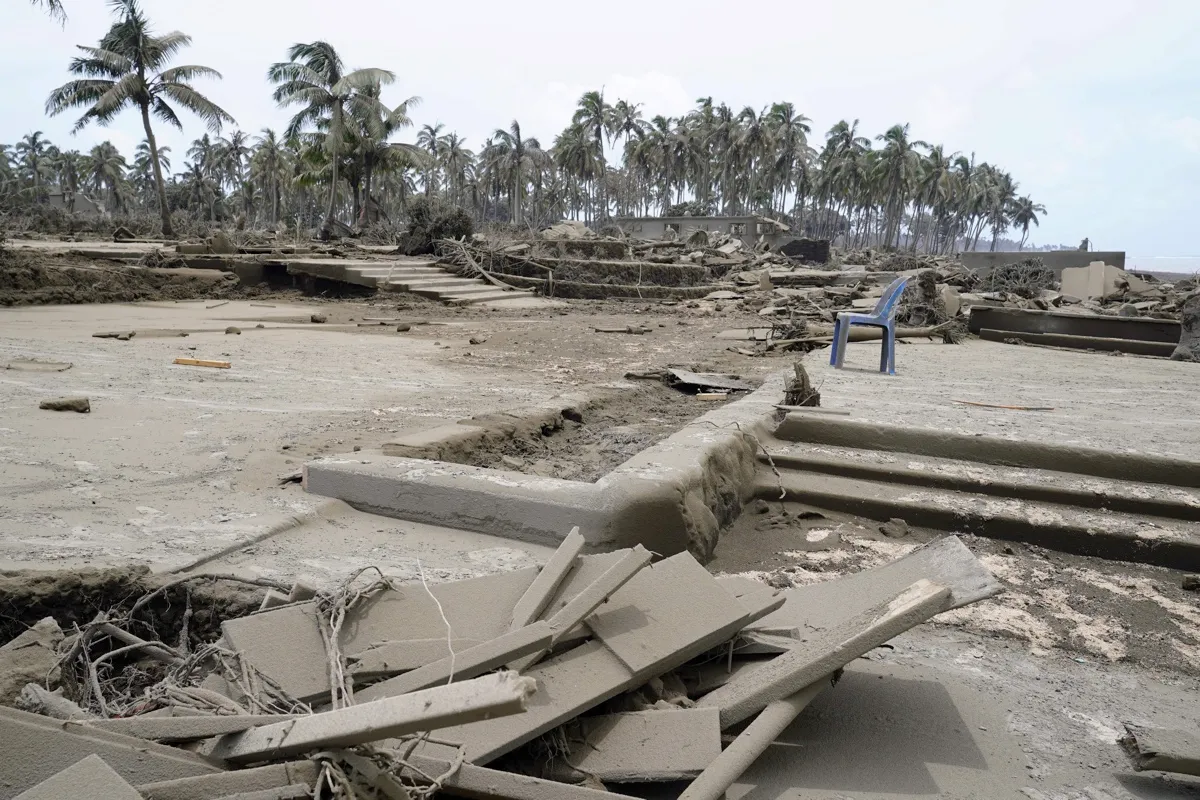
Why are submarine volcanoes so under-studied?
According to Mitchell, submarine volcanoes are “an unfamiliar part of volcanology”.
“The irony is that in one sense, this area is unknown because it’s normally not a very impactful part of volcanology. The activity of an underwater volcano usually stays on the seafloor, it has very little impact on land.
“Sometimes you have events that impact society. Back in October 2021, around Japan, an eruption there caused pumice rocks to float and collect in a harbour.”
Mitchell says these volcanoes are not as well monitored because they're not considered particularly dangerous.
“We don't know a lot about them, but there is little funding [for scientists] to be able to get out there and put out instruments down that can help tell us more and potentially give that warning signs.”
Though, the recent eruption may shine a light onto the murky waters. “Every event that happens enables us to do better for the future.”
About our experts
Dr Samuel Mitchell is a volcanologist and science communicator at the University of Bristol, focussing on submarine volcanoes and the dynamics of explosive eruptions.
Dr David Ferguson, of the University of Leeds, is a volcanologist looking at the interactions between magma and the enviornment.
Dr Ashley Davies is a NASA geologist and planetary scientist. He wotks with remote sensing data to interpret and model volcanic eruptions, particularly on the volcanic moon of Jupiter, Io.
Prof Lionel Wilsonis a volcanologist at Lancaster University and an expert on the physics of volcanic eruptions on Mars.

